there are many classic epics from this early period of palaeontology. the one i'm most concerned with at moment though, that which occurred here in my neck of the woods, alberta.
that would have to be none other than the great canadian dinosaur rush.
before i go into detail, the basic story of the dinosaur rush went something like this...
canada was not overly eager or engaged in exploring its abundant and important fossil fields in the west initially. it was the americans who first made a serious effort to collect dinosaurs from alberta starting in 1909, and had several summers working alberta all to themselves.
by 1912 the canadians realized if they didn't get in on the digging, all the dinosaurs would wind up everywhere but here! however because no one had been collecting on a large scale, there were no local canadians who could do the work. a family of professional fossil hunters from america had to be hired on behalf of canada to collect for fossils. now with two teams operating in the area a sort of competition broke out between them (that stayed furious but friendly)
okay now for the details...
there was of course the famous coal mapping expedition of joseph burr tyrrell that unearthed the first albertosaurus. before tyrrell's 1884 discovery, many from the geological survey of canada (in particular william dawson and thomas weston) had noted dinosaurs in alberta, but had only collected scraps and tidbits (they were too busy doing the first formal maps of the terrain and geology of the area to take time to do serious fossil collecting!).
 canada's first domestic palaeontologist lawrence lambe did what collecting he could in a series of expeditions between 1897 and 1901. however his limited manpower and resources meant at best he could only collect fragmented and partial material. even the few times he encountered complete specimens, due to his lack of proper transport, they had to be left in the ground.
canada's first domestic palaeontologist lawrence lambe did what collecting he could in a series of expeditions between 1897 and 1901. however his limited manpower and resources meant at best he could only collect fragmented and partial material. even the few times he encountered complete specimens, due to his lack of proper transport, they had to be left in the ground. even more sad, despite what could be at best called a limited interest in its own dinosaurs up till this point, as of 1902 the geological survey suspended any further fossil hunting due to having, apparently used up this limited interest. meaning if it had been left up to the canadians of this time (minus one very unhappy lambe) we would have had no further work done on our amazing dinosaur fields...
fortunately an outside element would be brought in to fix this situation!
the beginning of the rush...
legend has it all started as a result of a mere vacation...
albertan rancher john l. wagner went to new york city in 1909, and while in the big apple he paid a fateful visit to the museum of natural history. he was intrigued by the dinosaur hall, and the story goes that wagner exited the display laughing.
the curator of palaeontology henry osborn happened to be in the public hall at the time, and slightly alarmed that anyone could laugh at his world class exhibit he stormed over to confront the canadian rancher. when asked why he found the dinosaurs so amusing, wagner said it was amazing how people thought so much of these old bones. on his ranch back in canada the bones were so common his cattle tripped over them all the time.
osborn was amazed by this tale, and so sent his number one collector to check out this rancher's claim. when it was found he was telling the truth, osborn decided to collect from canada to grow new york's already amazing collection of dinosaurs...
remember this is JUST a story! in reality events were a little less sitcom.
john l. wagner did indeed goto new york, and he and osborn did exchange words, but in reality osborn had been long aware of the dinosaurs in alberta due to his correspondence and training of lawrence lambe (after all canada's first palaeontologist had to be trained somewhere!). however now with an invitation from the eager wagner to host a museum scouting effort, osborn decided that finally the time had come to send his own people to investigate the potential palaeontologic bounty in canada himself. so he sent his best man...
 the legendary barnum brown (mind you, as you'll see all the players in the canadian dinosaur rush were already or would become legends!). now i could do many posts on brown (in fact i may very well do so), but for now i'll mostly focus on his exploits relevant to his time in alberta.
the legendary barnum brown (mind you, as you'll see all the players in the canadian dinosaur rush were already or would become legends!). now i could do many posts on brown (in fact i may very well do so), but for now i'll mostly focus on his exploits relevant to his time in alberta.brown had up until this point been engaged in rather long run of successful series of digs (nearly a decade), just south of alberta, in montana. during this montana era in his career, brown had already secured his place in palaeontologic history by discovering, in 1902, the first two tyrannosaurus rexs ever...
at the end of 1908 (his last in montana for a while), he received word from osborn in new york to take a detour home through alberta, and check out the area around wagner's ranch.
in this brief excursion barnum saw enough fossil material to convince him, and thus osborn, that indeed a full on expedition was warranted. so in 1909 he set off to alberta, and the great dinosaur rush began!
1909-1911 the american monopoly...
when brown arrived to start work in alberta, he came prepared with a battle plan. improving on canadian thomas weston's method of exploring the badlands by canoe, barnum constructed a large floating platform which would serve as his mobile command centre. from here he could lazily cruise the red deer river searching its banks and shores for dinosaurs, and once they were collected he could load them onto his barge to be taken back to civilization and transported back to new york.
 (Production Note: Photo courtesy of Darren Tanke)
(Production Note: Photo courtesy of Darren Tanke)
by the end of brown's third field season in 1911 his success had not gone unnoticed by the canadians. with some of his material now going up on display in new york (some of the most complete dinosaur skeletons ever collected!), with a lot of publicity, many in canada grew uneasy and annoyed about the government's lack of effort to keep canadian dinosaurs in canada.
rather than see people keep getting upset over the issue the government decided to take action. initially they wondered about simply barring brown from working in canada. fortunately they quickly realized this was an unfriendly move, and certainly not one that fostered good scientific relations (especially since at the time the national museum of canada was working in montana!). instead the government insisted that the geological survey take action to collect some of these dinosaurs themselves.
the problem was that the survey did not have anyone on staff with either the experience or the time. lawrence lambe had been promoted, and was not disposable for summers at a time. in fact there was no one in the country with the know how to pull off a successful expedition of this scale, that alone compete with the professional barnum brown.
a novel idea was reached. the survey would hire private fossil hunters on its behalf. it just so happened just this sort of man was doing business with the survey at the time...
 charles hazelius sternberg, a fossil hunter of skill and ability that easily matched barnum brown's. sternberg now had a long track record and reputation as a professional, despite not being a university trained palaeontologist. he'd been one edward cope's assistants during the famous american bone war in the previous century (which may also partial explain why the canadian dinosaur rush remained a friendly affair), and had continued collecting and selling fossils for museums all over the world since.
charles hazelius sternberg, a fossil hunter of skill and ability that easily matched barnum brown's. sternberg now had a long track record and reputation as a professional, despite not being a university trained palaeontologist. he'd been one edward cope's assistants during the famous american bone war in the previous century (which may also partial explain why the canadian dinosaur rush remained a friendly affair), and had continued collecting and selling fossils for museums all over the world since.
charles was also famous for having brought all three of his sons up to be fossil hunters as well. so if the geologic survey hired charles, they'd also acquired the services of his very talented sons(though one of these sons as we'll see was a late addition to the canadian team). a pretty good deal if you ask me.
1912 tension on the red deer river...
barnum brown set off for alberta in 1912 unaware that anything was going to be different than the previous three field seasons. it came as quite a shock to him that suddenly there was another party not only working the same area by boat, but that they were related to one of his own crew members!

for the natural history museum had hired the eldest sternberg son, george, as a member of barnum's team. this put poor george in a tight spot during the field season of 1912. his coworkers were less than thrilled that the sudden competition was being caused by the rest of george's family! as we'll see though george's story straightened out a year later...

(Production Note: Photo courtesy of Darren Tanke)
up until 1912 barnum brown had been collecting dinosaurs near drumheller. he had scouted out the area around the town of steveville (what is now dinosaur provincial park), and noted its greater abundance of material, but had felt no reason to rush into the area and dig. however with another party in the area he suddenly felt some pressure, and as of such he pushed on south to DPP.
initially the sternberg's worked the area around drumheller, seeking leads from the local coal miners to find new specimens. they met with great success using this strategy. however at the end of the season hearing george's accounts of the DPP area, they decided to follow brown into the area the next year.
brown was very annoyed to find the sternberg's had followed him down the river in 1913. he wrote many angry letters back to new york complaining they should find their own area to work. it was at this point that george's life must have become the most difficult, and it was so bad he quit in the field and swapped over to his fathers crew.
despite their rivalry, the teams were very civil to each other in encounters, and would even visit each other on sundays (the only day taken off during the week). there was none of the active spying, stealing, or vandalism of the american bone war's from 40 years previous (which the 60 year old charles had dealt with at the start of his career with cope).
1914 territory dispute...
 (Production Note: Photo courtesy of Darren Tanke)
(Production Note: Photo courtesy of Darren Tanke)
the biggest threat to this peaceful coexistence occurred in 1914. barnum brown was delayed in heading out into the field, and so his assistant peter kaisen went out before him. he established camp in the heart of DPP, and when the sternberg's arrived he informed them that the american party had claim to all badlands within proximity of this camp. meaning in essence the sternberg's were restricted to just a fraction of the periphery of the area (mostly the eastern end).
due to a consultation with lambe back in ottawa, and his knowing there were no guidelines for palaeontologic competitions, sternberg decided to ignore this territorial claim and freely entered and dug at his whim. much to the annoyance of the americans. who remained silent at first.
however when george sternberg found a ceratopsian skeleton missed by barnum (his footprints passed within 2 metres of the fossil) it was the straw that broke the camels back. the americans confronted the canadian team. tensions lowered when it was pointed out that the sternberg's had gone to great lengths not to excavate any fossils the american's had clearly marked, and more to the point that there were plenty of dinosaurs to go around.
both teams were finding far more than they could ever hope to dig up in a season. they were often making choices about which fossils to leave in the ground... rather than be forced to keep scrambling ahead of their rivals to make finds. fighting made no sense at all...
1915 the height of the rush...

(Production Note: Photo courtesy of Darren Tanke)
a year later tensions had disappeared. there were indeed enough dinosaurs for one hundred field parties that alone two. even if the sternberg's had worked at DPP again that year...
ottawa noted there were plenty of other badlands throughout alberta that had not been properly explored, and since they had 4 capable fossil hunters at their disposal they decided to split them to cover this ground.
george was given his own team, and was sent to explore the area around big valley (north of drumheller), while the rest of the sternberg's ventured to the far south of the province along the milk river. both made discoveries, but not in the numbers of dinosaur park. at the same time as these rocks were younger (milk river) and older (big valley) than DPP's formations, the dinosaurs these two teams found were scientifically important and unique.
barnum brown spent one more summer in DPP, and was rewarded with plenty more skeletons (many of animals he'd been finding the previous 2 years, but also some new ones too). this would be his last year spent in alberta.
at the same time this wasn't the end of barnum brown. he'd go on digging elsewhere for decades still. though he'd never physically return to alberta, he'd come back to its dinosaurs for the rest of his career, as his tons and tons of collections were prepared and in need of a scientist to study them...
1916 the rush slows down...

this was no problem for charles, the majority of his career he'd worked as an independent. he and levi worked the dinosaur park area one last summer. they made many discoveries, and he found that the british museum of natural history in london was very eager to add complete dinosaurs to its exhibits.
the geologic survey was looking to send another expedition. having sent george as the leader of the previous years effort, lambe opted to give the other sternberg on staff some experience. george was not pleased by this, and left the survey like his brother and father the year before.

this last expedition of the canadian dinosaur rush would be lead by charles sternberg jr. , though he was commonly called charlie. this expedition like the others of his family in 1916 was small, and though successful not of the scale of his earlier work in the province between 1912 and 1915.
unlike the rest of his family however, charlie would stay on with the geologic survey the rest of his career and do further fieldwork and groundbreaking research on albertan dinosaurs well into the 1970's...
as a result of the great canadian dinosaur rush, albertan dinosaurs would become some of the best known in the world (pick up any dinosaur picture book before 2000 and i gurantee more than half the cretaceous dinos are from alberta!), even to this day...
the dinosaurs collected during this era still adore the halls of the natural history museums in new york and london (among the most visited in the world!). this was also where palaeontology finally took off from a fledgling science in canada, and expand into one of the world's hot beds for the study of fossils.
it too was one of the last great adventures of early palaeontology (mind you not THE last, but nearly). the sort of adventure you just can't find anymore in the modern world...


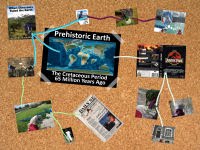


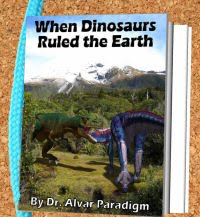


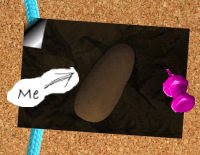
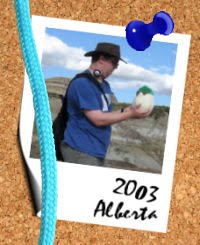




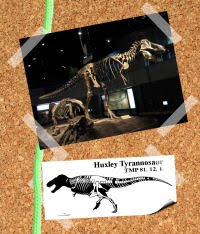








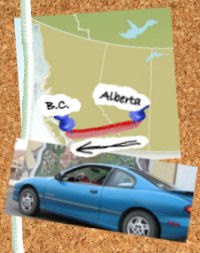






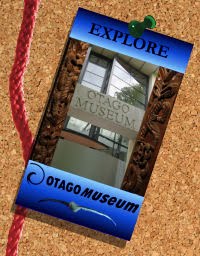



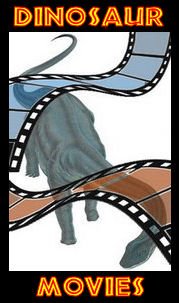






2 comments:
you are right
I remember most Discovery Channel's PaleoWorld episodes featured Albertan dinos.
A COMPLETE parasaurolophus lies deep under the sea! :(
really nice story
Wow. Great History lesson. I didn't know THE Barnum Brown participated. Is it a coincidence that the Canadian rush was after the American one? I don't think so. And, thanks for giving us Americans some due credit. I had no idea that one of the members on Edward Drinker Cope's team played a MAJOR role in the Canadian rush. Very Cool!
Post a Comment